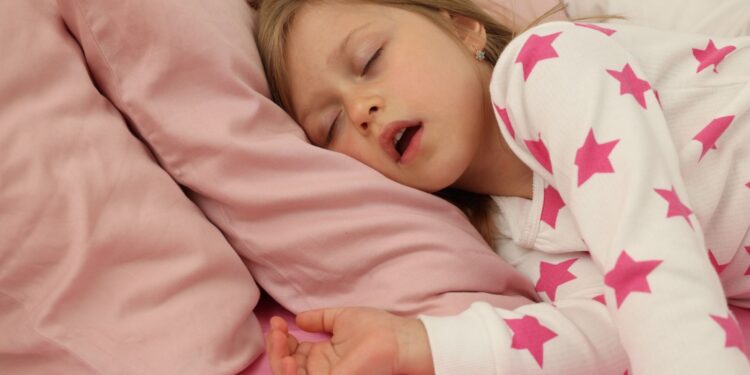Pediatric sleep disorders are real, common, and treatable. Sleep is a cornerstone of a child’s healthy development. From birth through adolescence, sleep supports brain growth, emotional regulation, learning, memory, and physical health. But for many children, restful sleep doesn’t come easily. Pediatric sleep disorders affect millions of families worldwide, leading to behavioral challenges, school difficulties, and emotional distress.
In this blog, we’ll explore what pediatric sleep disorders are, the types most commonly seen in children, their symptoms, causes, and how they can be effectively managed.
What Are Pediatric Sleep Disorders?
Pediatric sleep disorders refer to persistent sleep disturbances in infants, children, or adolescents that interfere with their normal rest cycles. These issues may impact a child’s ability to fall asleep, stay asleep, wake up on time, or function well during the day.
While it’s normal for kids to occasionally resist bedtime or wake during the night, frequent or long-term issues may point to an underlying sleep disorder that needs attention.
Common Types of Pediatric Sleep Disorders
1. Insomnia
-
Description: Difficulty falling asleep, staying asleep, or waking up too early.
-
Common in: School-aged children and teens.
-
Causes: Anxiety, irregular bedtime routines, screen time, or stress.
2. Obstructive Sleep Apnea (OSA)
-
Description: Breathing repeatedly stops and starts during sleep due to airway blockage.
-
Symptoms: Loud snoring, gasping, restless sleep, daytime fatigue, behavioral issues.
-
Causes: Enlarged tonsils/adenoids, obesity, or anatomical issues.
3. Parasomnias
-
Includes:
-
Night terrors: Sudden, terrified reactions during sleep without full awakening.
-
Sleepwalking: Walking or performing tasks while still asleep.
-
Sleep talking: Speaking during sleep, usually harmless.
-
-
Age group: Common in toddlers and younger children.
-
Triggers: Fever, stress, sleep deprivation.
4. Restless Legs Syndrome (RLS)
-
Description: Unpleasant leg sensations that create a strong urge to move the legs.
-
Timing: Typically worse in the evening and during rest.
-
Causes: May be linked to iron deficiency or genetics.
5. Delayed Sleep Phase Syndrome (DSPS)
-
Description: A sleep cycle shifted significantly later than normal, common in adolescents.
-
Result: Difficulty waking in the morning, trouble focusing in school.
-
Causes: Circadian rhythm disruptions, screen use before bed.
6. Behavioral Sleep Problems in Young Children
-
Description: Resistance to bedtime, needing parental presence to fall asleep, frequent awakenings.
-
Cause: Lack of a consistent bedtime routine, separation anxiety, or environmental factors.
Signs and Symptoms of Pediatric Sleep Disorders
Be on the lookout for:
-
Frequent nighttime awakenings
-
Snoring or labored breathing during sleep
-
Bedtime resistance or delayed sleep onset
-
Excessive daytime sleepiness or hyperactivity
-
Trouble waking up in the morning
-
Mood swings, irritability, or difficulty focusing in school
Sometimes, children with sleep disorders are misdiagnosed with ADHD or behavior problems because of the similarities in symptoms.
Causes and Risk Factors of Pediatric Sleep Disorders
-
Genetics: Some disorders like RLS or insomnia can run in families.
-
Medical issues: Asthma, allergies, GERD, or neurological conditions.
-
Mental health: Anxiety, depression, or trauma can disturb sleep.
-
Poor sleep hygiene: Irregular bedtimes, too much screen time, or stimulating environments.
-
Environmental: Noise, light, temperature, or shared sleeping spaces.
Diagnosis: When to See a Sleep Specialist
If a child shows chronic sleep problems for several weeks that interfere with daily life, consult a pediatrician. They may refer you to a pediatric sleep specialist or recommend a sleep study (polysomnography) to diagnose disorders like sleep apnea.
A detailed sleep diary, medical history, and behavioral assessments are usually part of the diagnostic process.
Treatment and Management Options
1. Good Sleep Hygiene
-
Set consistent bedtimes and wake times—even on weekends.
-
Create a relaxing bedtime routine (bath, reading, no screens).
-
Keep the bedroom dark, cool, and quiet.
-
Remove TVs, tablets, and smartphones at least one hour before bedtime.
2. Behavioral Therapy
-
For insomnia or behavioral sleep problems, Cognitive Behavioral Therapy for Insomnia (CBT-I) or parental training can be effective.
-
Positive reinforcement, bedtime fading, and gradual separation techniques are often used.
3. Medical Treatment
-
Sleep apnea: May require tonsil/adenoid removal, CPAP machines, or weight management.
-
RLS: Iron supplementation if a deficiency is identified.
-
Medications: Used rarely and cautiously, mainly when behavioral strategies fail or in severe cases.
4. School and Social Support
-
Inform teachers and school counselors if sleep is affecting academic performance or behavior.
-
Daytime napping, if excessive, may need to be addressed with structured routines.
The Importance of Sleep for Children
Poor sleep affects every aspect of a child’s life—cognition, behavior, immunity, and emotional well-being. Quality sleep:
-
Enhances memory and learning
-
Boosts mood and mental health
-
Regulates growth hormones and metabolism
-
Strengthens the immune system
Ensuring children get adequate, uninterrupted sleep is one of the most powerful tools for long-term health and success.
Final Thoughts
Pediatric sleep disorders are real, common, and treatable. By recognizing the signs early and seeking help when necessary, parents can dramatically improve their child’s quality of life. Whether it’s a matter of a better bedtime routine or specialized medical intervention, the goal is the same: to help every child get the restful sleep they need to grow and thrive.
If your child struggles with sleep regularly, don’t ignore it—start with your pediatrician and explore the supportive path forward.






